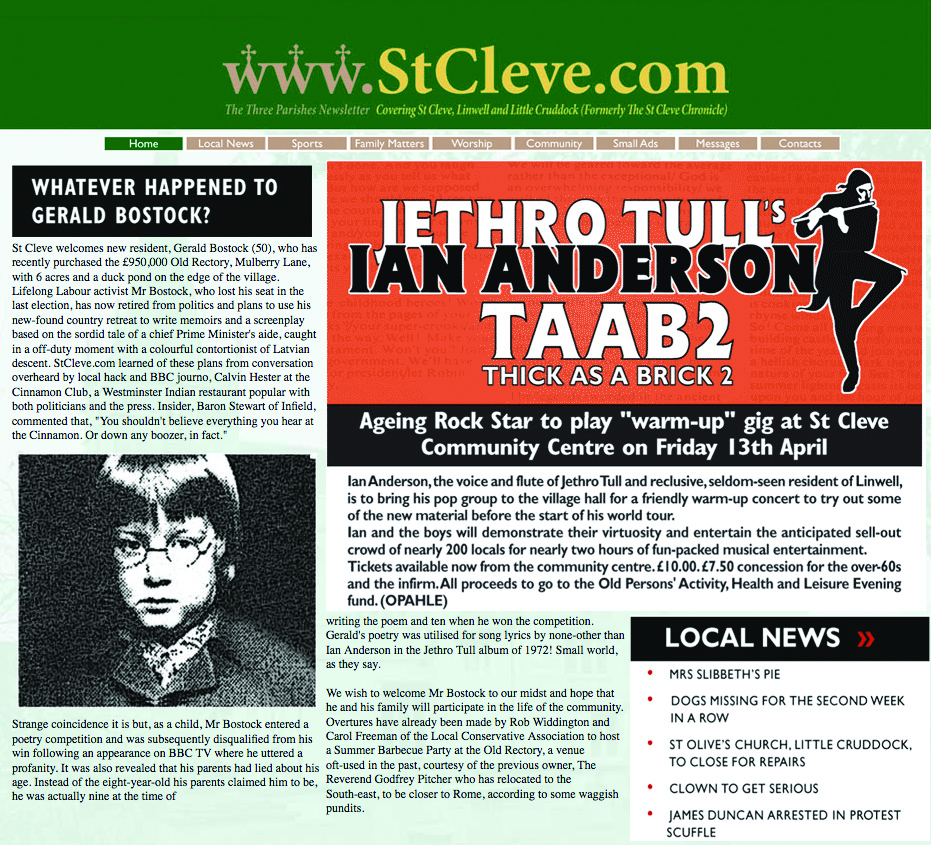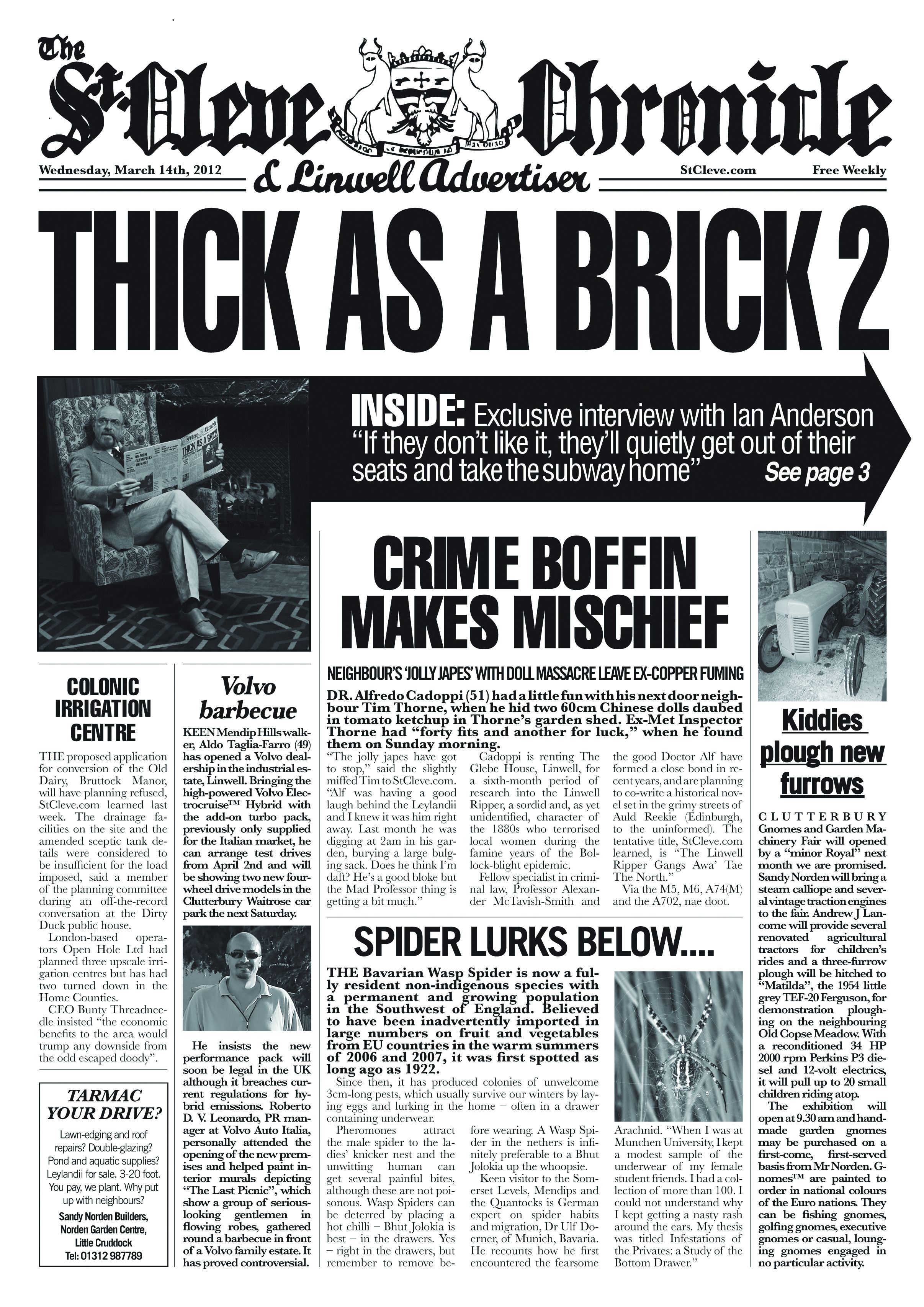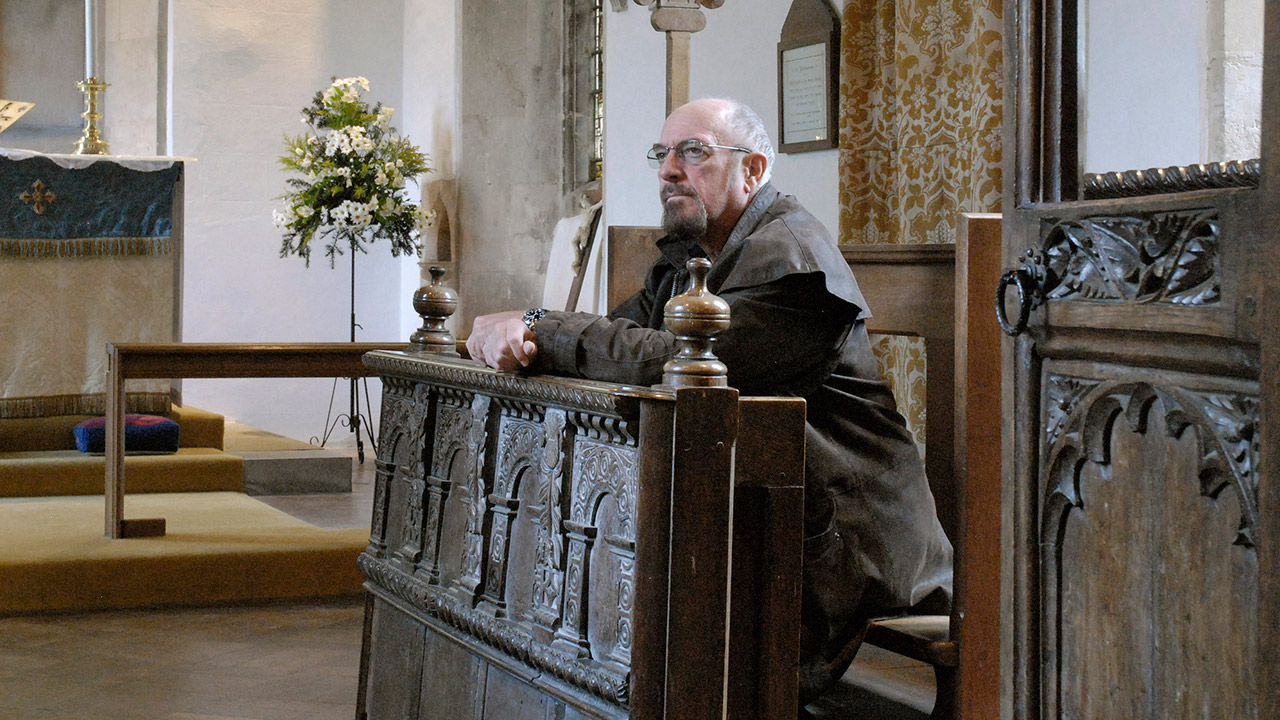As the observant among you will have noticed, Ian Anderson is poised to release their first studio album since 2003’s Rupi’s Dance, and it’s a wholesale follow-up to the original Thick As A Brick. Like its predecessor, it’s a single, continuous piece of music and a concept album; something, you suspect, that Anderson has been extremely reluctant to do, mindful of the muddled response first time round, and keen to keep his music moving forward. However, some things are just meant to be.
“The expectations of other people are the thing that probably kept me away from taking it seriously for a long time,” he says. “It’s been put to me a couple of times over the last 10 years or so, to do a follow-up, but it was Derek Shulman of Gentle Giant, who came to me as a record company executive rather than as a musician or a fan, saying it would be really great to do something new based on TAAB.

I said: ‘I don’t want to go back there, Derek!’ But he kept pressing me. I said I’d give it some thought for a couple of minutes and clearly I did!”
Written and recorded within a startlingly brief period of time during 2011, Thick As A Brick 2: Whatever Happened To Gerald Bostock? is an album that will be impossible to listen to without the spectre of the original looming. But it’s clear that Anderson has embraced the comparison and invested it in a suitably poignant theme – the passing of time, the forward trudge of mortal life, the limitless choices that we face at a young age and the unmistakable sense that, freewill be damned, what we become as adults is destiny.
“If there’s one thing that makes it come alive for me as a project, it’s the idea of what would happen to somebody 40 years on,” says Anderson. “It’s about my own expectations of life and what happens to me and what might have happened to me if I had followed a different path. It’s an interesting, slightly intellectual proposition, that maybe there is that almost pre-ordained, Kismet-like future. I find that fascinating. It’s essentially summed up on this album in a part that’s entitled What Ifs, Maybes And Might-Have-Beens.”

As its subtitle implies, TAAB2 reintroduces us to the prodigious Gerald Bostock, 40 years on from his triumph and subsequent disqualification from that fateful poetry contest. If you’re a stickler for detail, however, you may wish to take a deep breath. Anderson has tinkered with his creation, revealing that Bostock is older than previously advertised.
“I’m at pains to explain that at the time of the contest his parents lied about his age and he was actually nine years old when his poem won,” he insists. “When he was disqualified he was 10. It’s basically because I have to make Gerald Bostock 50 years old this year, not 48, because I like round numbers! But we now see Gerald Bostock as a defrocked evangelical priest, as a highly-paid investment banker that everyone hates, as mental and physical casualty of the recent desert conflicts, as an ordinary man who plays with his toy train set and has a wife who cooks him Fray Bentos pies, and we also see him on the album cover as an ex-MP. It’s exploring life’s endless possibilities.”
Although manifestly more serious in lyrical terms than the original TAAB, which Anderson now describes as “quite a lot of silliness, pretty much all the way through”, the sequel does retain plenty of its forerunner’s essence, not least through a return to that iconic mock newspaper artwork which has been painstakingly updated for the 21st century.
“Forty years on the St Cleve Chronicle & Linwell Advertiser is StCleve.com, an online parish magazine for St Cleve, Linwell and Little Cruddock,” Anderson explains. “The original album cover was sitting on my desk during all the time that I was writing the sequel 40 years later, because I felt I had to have some of those elements moving on into the modern day. Beyond the tongue-in-cheek side, it’s about using social media to allow communities to interact with each other - quite a binding force, particularly for smaller communities where people are perhaps less likely to knock on each other’s doors. I think that’s a great thing.”

For those of us who don’t live in the fictional St Cleve, there’ll soon be an opportunity to make direct contributions to the revamped newspaper, something that clearly delights Anderson.
“One of the things we’ll be inviting our fans to do is to be local reporters for StCleve.com,” he says with a chuckle. “They’ll be able to send in their own spoof stories to go on the website. People will have fun with that!”
Once again mixed by Steven Wilson, TAAB2 looks certain to be one of progressive rock’s biggest talking points of the year. Following up such a revered and seminal record could be construed as a huge risk, but if there are two things that Ian Anderson does not lack, it’s confidence in his own music and a refreshing disregard for how it may be received.
“I wanted to make something that appealed to me, on both musical and intellectual levels,” he concludes. “I think there’s some great stuff on there, and the band are brilliant. Some people will think it’s great. Some people will say: ‘Bloody hell! What is this old prat on about?’ but frankly, in someone else’s immortal words, I don’t give a damn!”
This article originally appeared in issue 24 of Prog Magazine.

